
How to pick the best custom t-shirt printing method
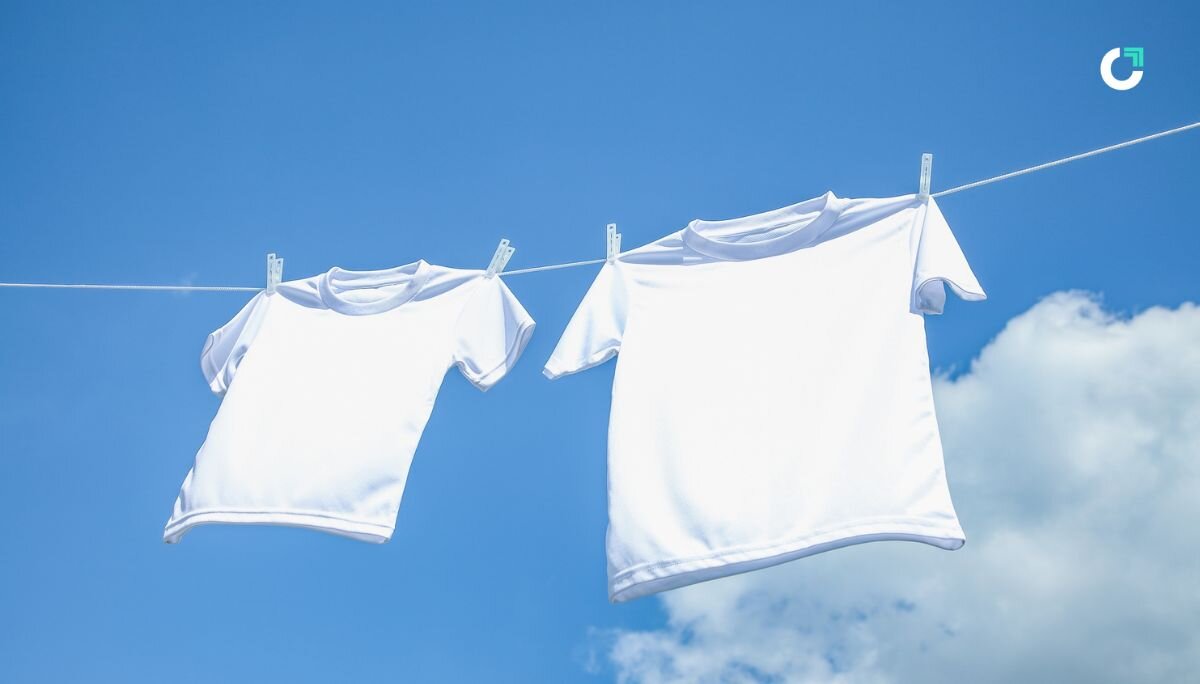
A well-designed custom t-shirt is possibly the most useful piece of merchandise a company can make. While branded t-shirts are so ubiquitous they might feel overdone, they’re a classic for a good reason. When the design is right and the quality of the t-shirt is high, people love wearing them.
Don’t just take our word for it, though – one 2023 ASI report found that 47% of respondents agreed they would keep and wear a promo t-shirt for 2 years or longer, and that overall, t-shirts generate approximately 5,000 impressions over their lifetime.
The key to creating a great shirt people want to keep and wear? A compelling design, the right fabric weight, and a suitable printing method.
While the “right” design is a matter of audience and the “right” T-shirt material often comes down to budget, the “best” printing method is often more complicated. You have to weigh factors such as cost, desired effect, durability, color vibrancy, and more.
In this article, we’ll tell you how all the most common t-shirt printing methods work, and share the pros and cons of each. With this information, you’ll be able to make an informed decision about which printing method will be best for your next custom t-shirt.
Top t-shirt customization methods to consider
There are quite a few choices available for t-shirt printing. First and foremost, you have to consider your design, and how you want it to look on your t-shirt.
Different methods produce different levels of detail, color vibrancy and color accuracy. They also produce different textures and different effects, or offer varying levels of durability. There are also different costs for each method and other practical considerations to make.
1. Direct to garment (DTG)
With direct-to-garment (DTG) printing, ink is printed straight onto a t-shirt with a specially designed inkjet printer. Specialized, water-based inks that are absorbed by the fibers of the garment are also used.
Pros of DTG printing:
- DTG printing creates very detailed, photorealistic designs
- Great for designs that use a wide range of colors.
- There’s very little setup time with DTG printing, making it well suited to low-volume production runs.
- DTG printing is more environmentally friendly than other methods.
Cons of DTG printing:
- Colors can lose vibrancy because ink may be absorbed by the fabric during the printing process.
- Colors may lack accuracy.
- Not compatible with all fabric types – DTG printing works best on 100% cotton or high-cotton blend fabrics.
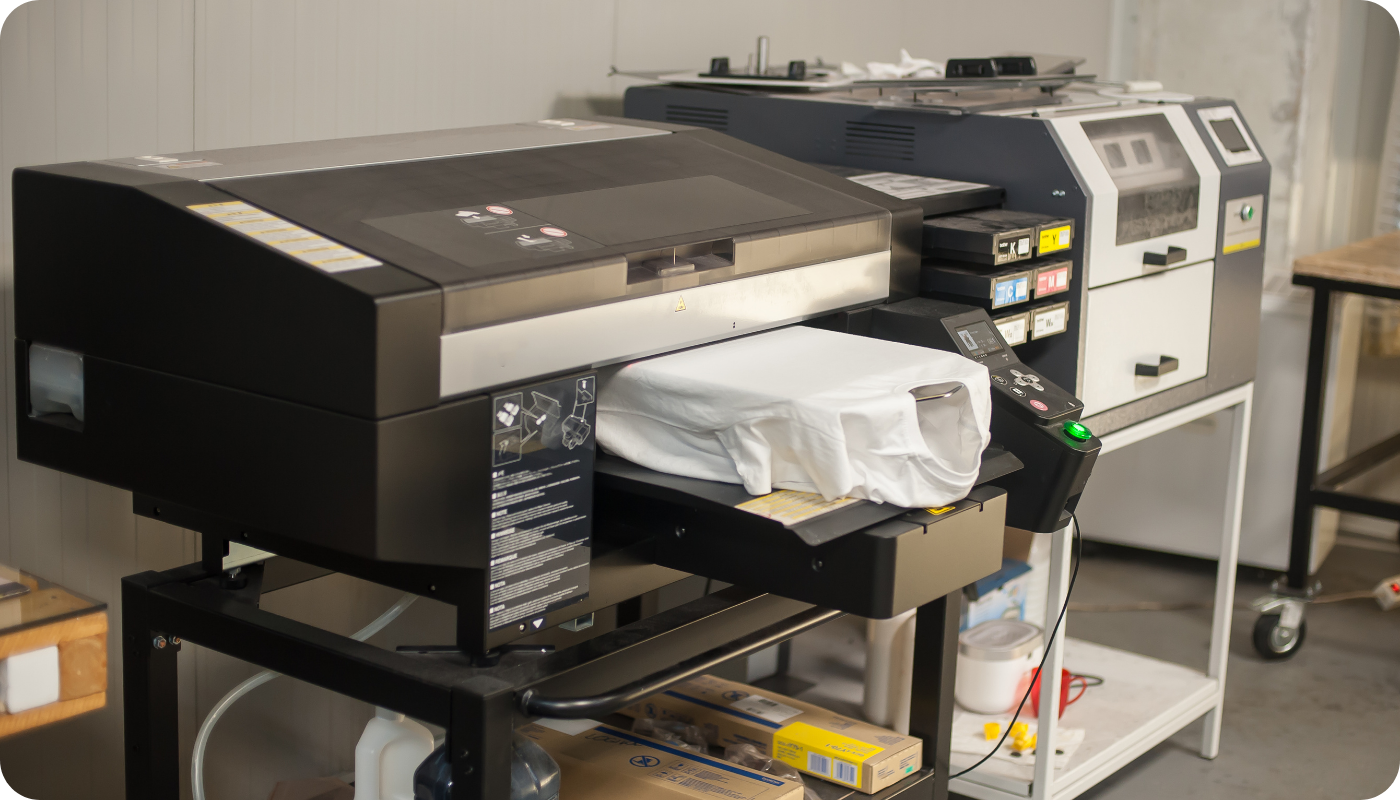
2. Screen printing
Screen printing is also known as silkscreen printing. With screen printing, stencils are created for a design, and ink is pushed through the stencils and a screen to be transferred to a t-shirt.
Pros of screen printing:
- Screen printing produces very vibrant colors because the ink is layered on the surface of the t-shirt.
- Compatible with many materials.
- Versatile – depending on the ink and process you pick, you can achieve a variety of eye-catching results.
- The resulting print is highly durable and can withstand multiple wash and dry cycles.
- Cost-effective for large order volumes.
Cons of screen printing:
- Screen printing isn’t well-suited to complicated designs
- Limited colors – while the # will vary between vendors, there is usually a maximum number of colors that can be used in a single design.
- Production doesn’t suit low-volume orders.
Specialized screen printing techniques
One of the key benefits of screen printing is its versatility. There are many specialized inks and processes available that can be leveraged during the screen printing process to create a more distinct and eye-catching result.
- High-density screen printing, which involves printing the same design multiple times with the same screen and a higher-density ink, resulting in a heavy, raised texture.
- Metallic and glitter printing, which incorporates metallic pigments or glitter for a reflective or sparkling finish.
- Discharge printing: Removes the fabric’s dye and replaces it with ink for a soft, vintage look that blends into the material.
- Glow-in-the-dark and UV-reactive printing: Uses specialty inks that glow in the dark or change color under UV light.
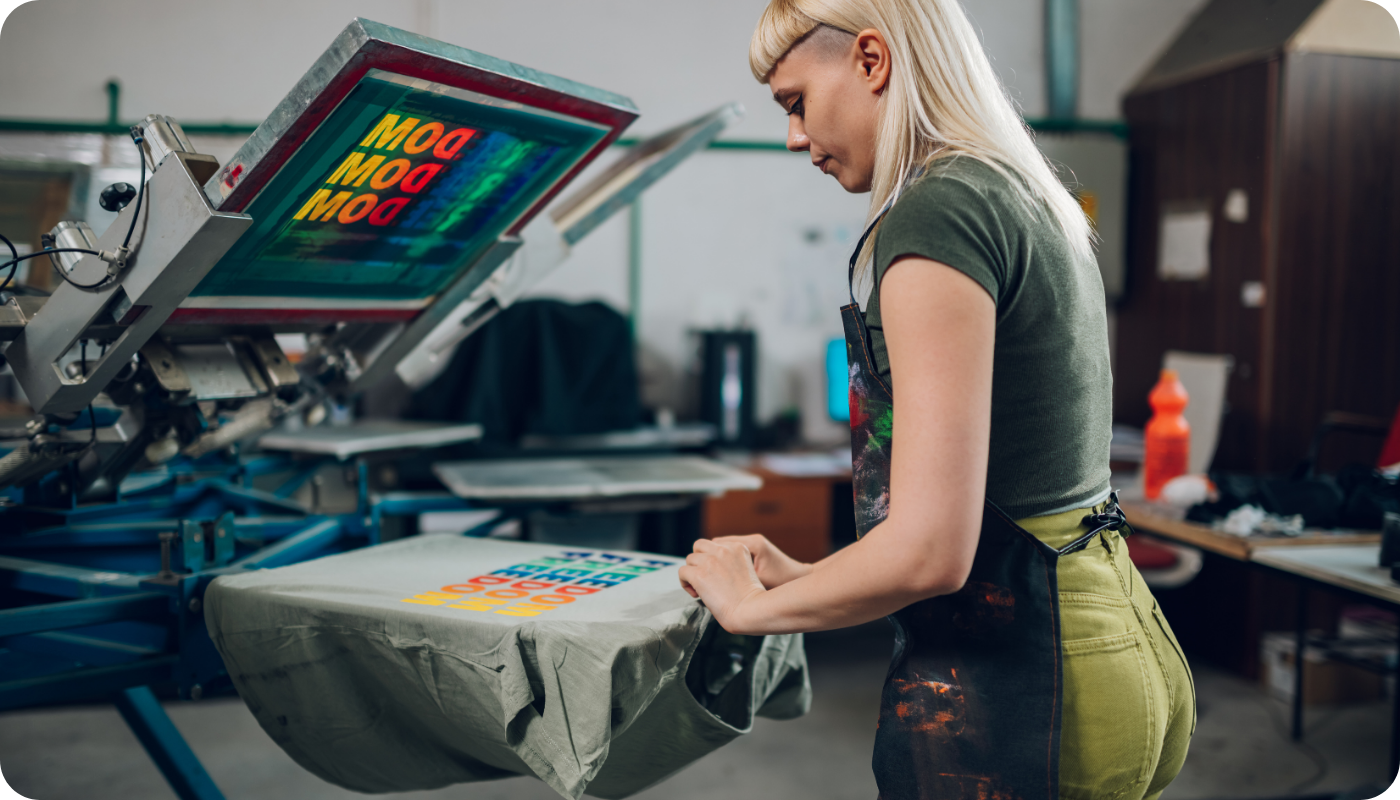
3. Heat transfer
With heat transfer printing, designs are printed onto specially designed paper and then heat is used to transfer the design onto a t-shirt. The ink adheres to the fabric, leaving the design attached to the surface.
Heat transfer printing can be used to create highly detailed designs with vibrant colors. The process is also low-cost and suited to low-volume orders. On the downside, printed designs are not as durable. They may also not work as well on dark colored t-shirts.
Pros of heat transfer:
- Great for detailed or complex designs, including gradients and photo-realistic images.
- Allows for a wide range of vibrant colors and subtle effects.
- Works well on both light and dark fabrics.
- Compatible with many fabric types, including synthetics and blends.
Cons of heat transfer:
- Designs may fade, crack, or peel over time, especially with frequent washing or drying.
- Makes the t-shirt less breathable, especially if your design area is large.
- Heat application can damage sensitive fabrics.
- Not as durable as screen printing or embroidery for long-term wear.
Direct to film (DTF)
Direct-to-film (DTF) printing is a popular modern heat transfer method. It involves printing a design onto PET film using water-based inks and applying a powdered adhesive.
The printed film is then heat-pressed onto the garment, bonding the design to the fabric. With DTF printing, a design is printed on a PET film with water-based inks and a transfer powder. A heat press machine then transfers the design onto a t-shirt.
Pros of DTF printing:
- Creates highly detailed designs with vibrant colors.
- Can be used on a wide variety of fabrics.
Cons of DTF printing:
- Environmentally unfriendly.
- Designs may lack durability.
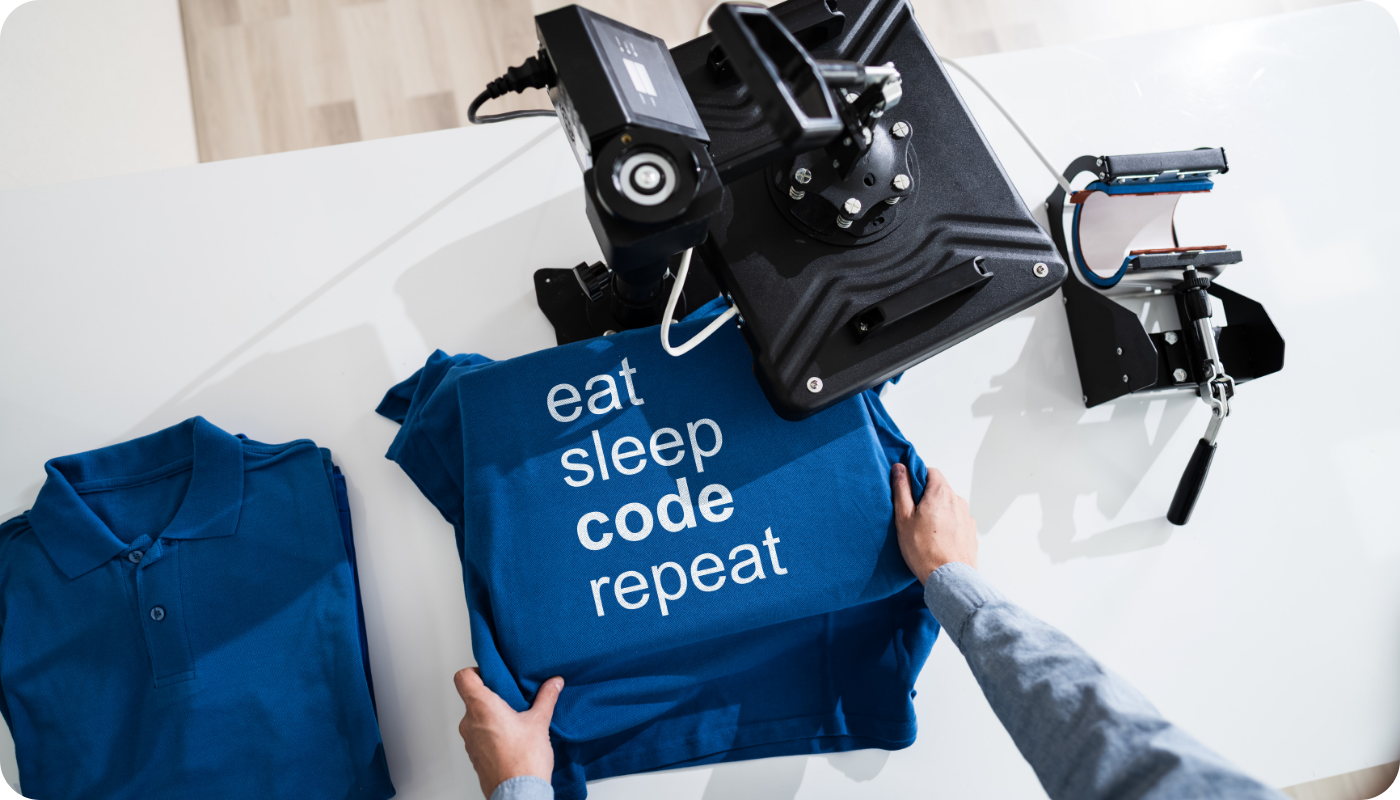
4. Embroidery
Embroidery is a classic way to put a design on a t-shirt that is widely used. Your design is sewn into the fabric, resulting in a durable and high-quality finish.
Two common types of embroidery include 2D flat embroidery and 3D puff embroidery.
Pros of embroidery:
- Embroidery is well-suited to minimalistic designs and features, like logos, monograms, and company names.
- Very versatile, with a wide choice of colors available and the possibility of using it on a wide range of materials.
- Designs are long-lasting, with texture and dimension.
Cons of embroidery:
- It’s often not possible (or very costly) to create highly detailed designs.
- Difficult to achieve vibrant colors and a wide range of colors.
- Production costs can also be relatively high
- Not as suitable for lightweight fabrics.
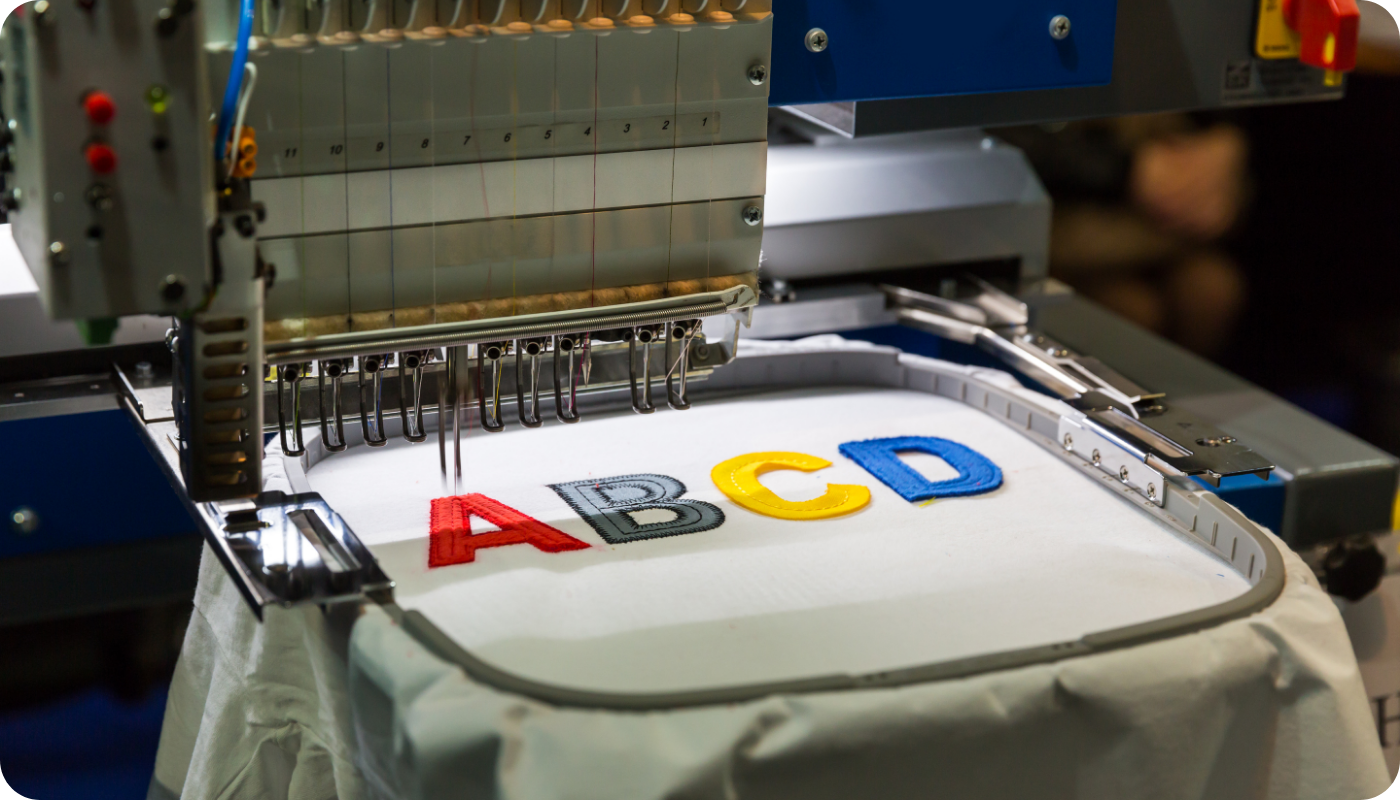
5. Textured printing methods
Textured printing methods use fibers or inks that leave a textured surface finish.
Flock printing
With flock printing, adhesive is accurately applied to the surface of a t-shirt and a layer of short, thin fibers is added to create a velvety texture. Application is handled through mechanical or electrostatic methods.
Flock printing creates a very unique, soft-textured design, and the method can also be used on lots of materials. On the downside, costs can be high, flock designs require care and only simple designs are possible.
Puff printing
Puff printing uses ink with a puff additive that expands when heated, creating a raised, textured design on top of the fabric.
Like flock printing, puff printing creates designs with a unique texture, and it can be used on lots of materials. Designs are also durable. The downsides are cost and limited design complexity.
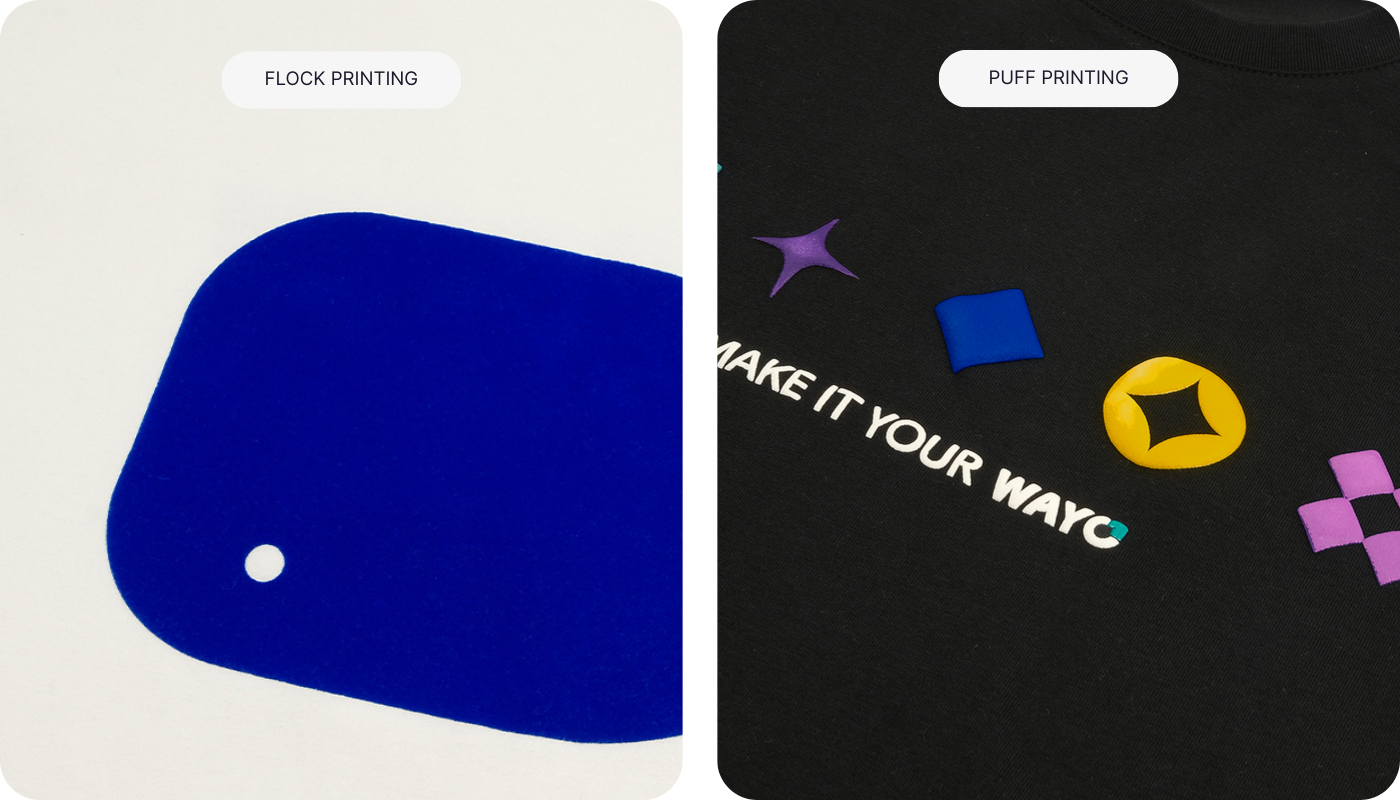
6. Hot stamping
With hot stamping, heat and pressure is used to transfer an image from foil onto a t-shirt. It's normally used for logos, names and simple single-color designs. Hot stamping creates shiny, eye-catching designs.
Gold foil
Gold foil hot stamping creates a luxurious, shiny, gold-colored foil finish.
Reflective strip
Reflective strip hot stamping is often used for sportswear. It creates a striking visual effect that captures the light.
Silver foil
Silver hot stamping creates an elegant, modern look.
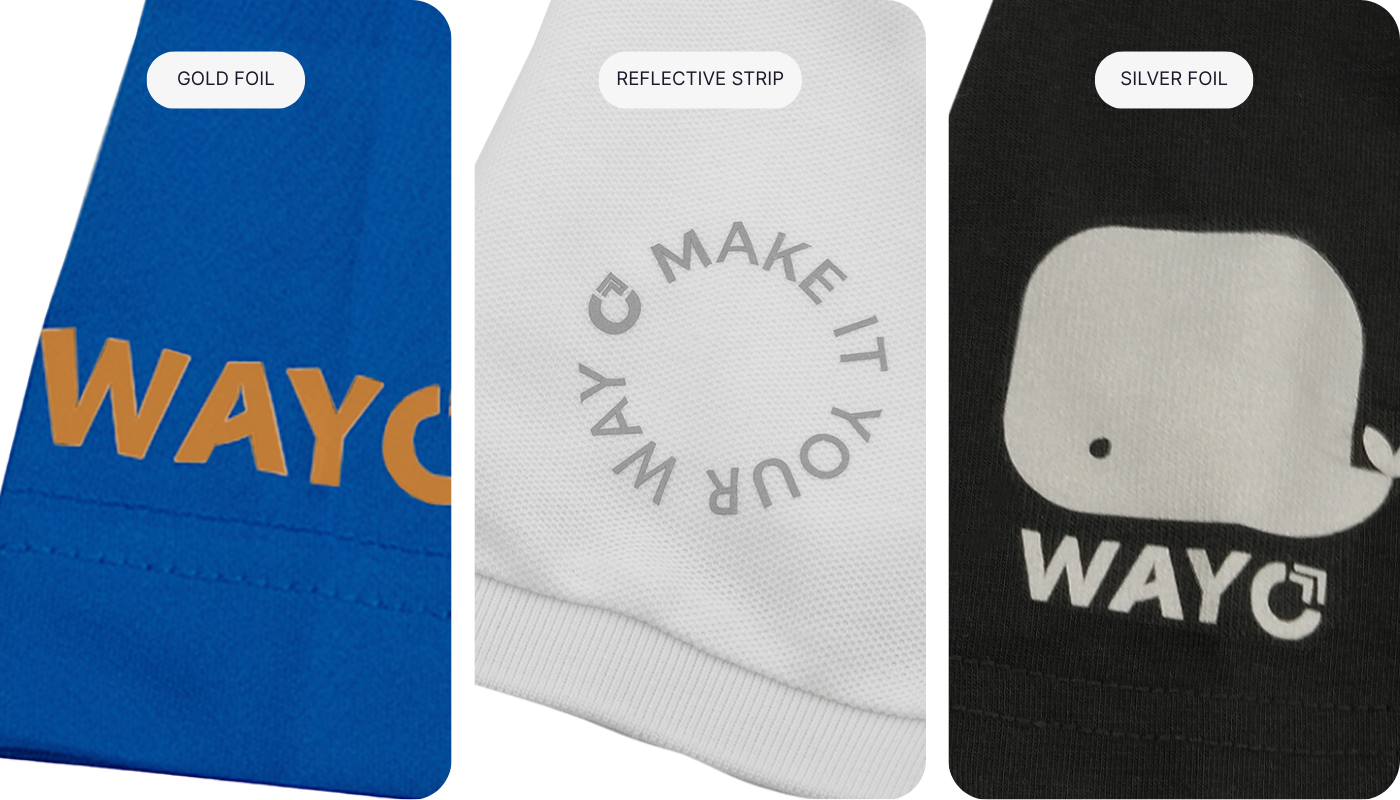
7. Sublimation printing
In sublimation printing, designs are first printed onto a special transfer paper. Heat is then used to transfer the design onto a t-shirt. With sublimation printing, the inks are turned into gas by the heat, which means they are absorbed more deeply into the material.
Pros of sublimation printing:
- Sublimation printing creates a smooth surface with vibrant colors – often with the option to do all-over designs.
- Designs are more durable, with no fading or cracking.
- Highly detailed designs can be created.
Cons of sublimation printing:
- Not suitable for use with cotton t-shirts. Sublimation works best on polyester t-shirts.
- Can be more expensive for large-volume orders.
- Production speeds are slower.
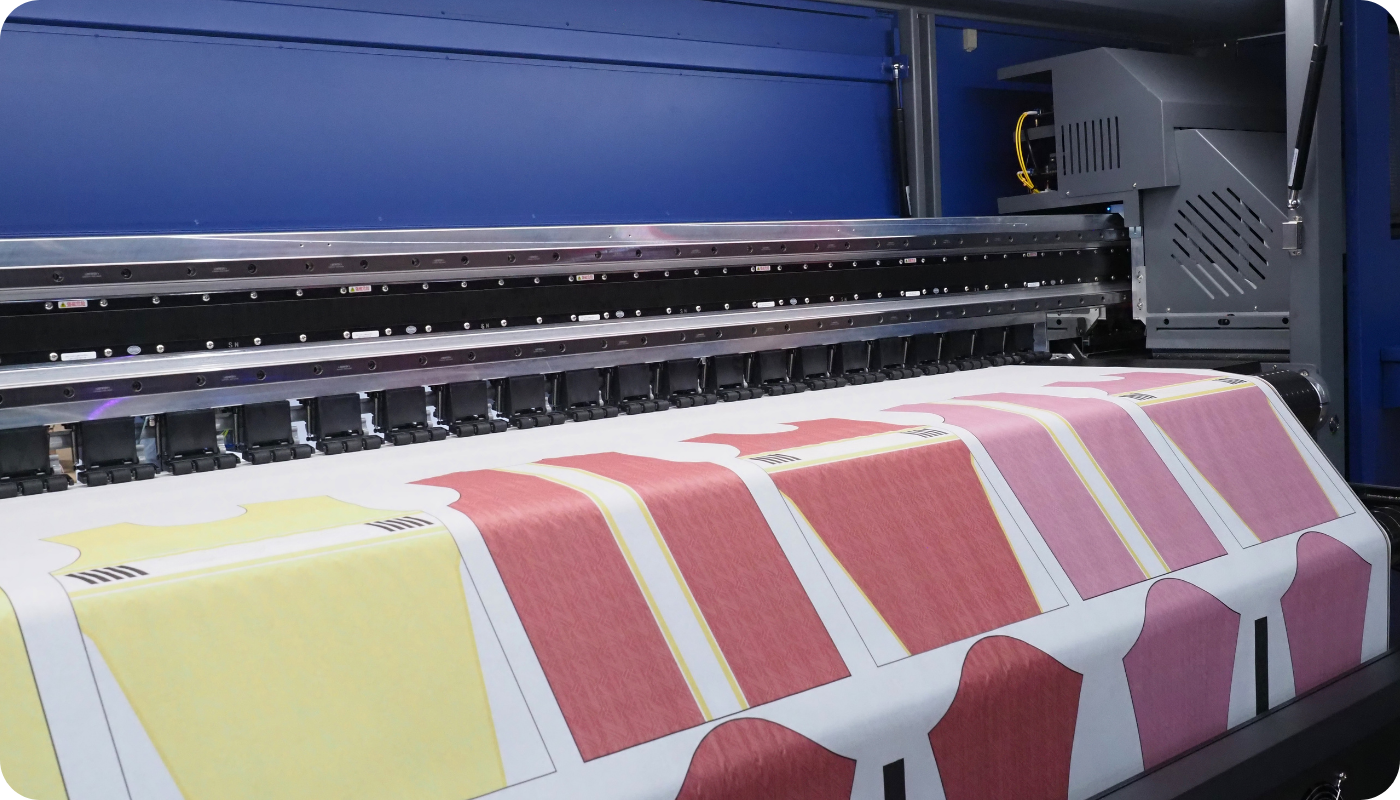
8. Other methods
Some other methods we haven’t covered in much detail here but which you might want to take a look at are plastisol transfer printing, heat transfer vinyl printing, and discharge printing.
Bring your t-shirt design to life with Wayo
Wayo currently offers the following t-shirt printing methods: direct to garment, screen printing, high-density screen printing, heat transfer, embroidery, flock printing, puff printing, and hot stamping (gold foil, silver foil, and reflective strip).
Depending on the shirt you choose, there will be a different range of methods available for you to try.
Here’s how to order a branded custom t-shirt with Wayo:
- Choose your t-shirt style – Compare different materials and styles.
- Pick your base color and order quantity – you can specify how much of each size you want directly in the platform
- Customize your t-shirt – Easily upload your logo and design elements to the Wayo Design Studio.
- Choose your customization method – Photorealistic previews make it easy to visualize what your finished product will look like.
- Finalize and place your order – Then sit back and relax. Your order will be delivered to your destination address in as little as 2-3 weeks depending on your chosen shipping method.
With Wayo, it’s possible to use more than one printing method on a single t-shirt. Why not have a detailed DTG printed design on the front of a t-shirt with a glossy gold foil hot-stamped design on the sleeves?
You get access to a wider range of printing methods with Wayo, as well as access to all the most advanced and highest-quality methods.
Explore our full range of t-shirts and start customizing today.


